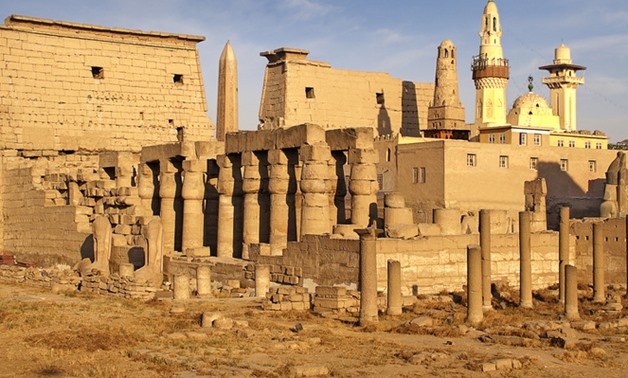
Breathtaking Luxor Temple in Luxor's West Bank - Wikipedia
CAIRO - 14 October 2019: At the Assasif cemetery in the West Bank of Luxor, the Ministry of Antiquities will announce on October 19, a new discovery of colored coffins and mummies in the West Bank of Luxor.
It is one of the largest and most important discoveries that have been announced during the past few years.
It is worth mentioning that the Ministry announced the archaeological discovery through the Egyptian mission headed by Dr. Zahi Hawass, who stated that since the mission began working in the Valley of the Apes in December 2017, it succeeded for the first time in finding the workshops used for the manufacture and processing of funeral furniture utilized in the tombs of the kings, located next to a storage pit that took the numbering (KVT). In front of it, A kiln was discovered to burn pottery and metal, which was found next to two silver rings, in addition to large quantities of decorative items that were used to decorate wooden coffins during the era of the 18th Dynasty, and also the discovery of gold flakes and some decorative elements that were titled the wings of Horus.
Furthermore, Hawass added that work is currently underway in the western valley to search for the tomb of Queen Nefertiti, the tomb of her daughter and wife of King Tutankhamun Queen Ankhesenamun. The veteran archaeologist further commented that the area between the tomb of King Amenhotep III and the tomb of King Ay is the area that is expected to contain the tombs of members of the dynasty that lived during the Amarna era.
Additionally, Hawas further explained that one of the most important discoveries made by the mission is finding 30 specialized workshops that were utilized for the manufacture and processing of funeral furniture prior to being placed inside the cemetery, in addition to a tomb labeled KV 65 that was used to preserve some funerary objects and furniture, which is similar to the tomb KV 54 adjacent to the tomb of King Tutankhamen, in which the tools used in the construction of the royal tombs were found.
Moreover, Hawass further clarified that the second mission, working in the Valley of the Kings is the largest excavation that took place in the Valley of the Kings after the excavations carried out by the English archaeologist Howard Carter in search of Tutankhamen’s tomb. The veteran archaeologist further explained that the mission is now working to uncover the royal tombs that have yet to be uncovered, in addition to the tombs of the wives and sons of kings of the eighteenth Dynasty, who were buried in the Valley of the Kings. Burials in the Valley of the Queens did not begin until the nineteenth Dynasty.
Hawass also clarified that the mission has worked next to the tomb of King Ramses VII, the tomb of Queen Hatshepsut, next to the tomb of King Ramses III and behind the tomb of King Merneptah, stressing that the mission has also excavated next to the tomb of King Tutankhamen where they found many artifacts including; 42 small huts where workers kept the tools used to construct the tombs before they left the valley for Deir el-Medina, in addition to many of the hieroglyphic paintings that illustrate many archaeological topics and fragments of carved tombs and rings spanning back to the era of the 19th and 20th dynasties.

Comments
Leave a Comment